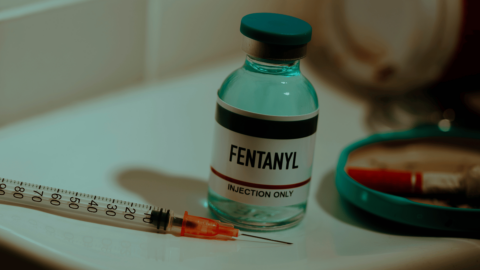Fentanyl addiction has become one of the biggest public health crises in the U.S., responsible for the majority of opioid-related overdoses. Many people looking to quit opioids wonder:
- Does Suboxone work for fentanyl addiction?
- Why is fentanyl withdrawal worse than other opioids?
- Can Suboxone fully block fentanyl’s effects?
The short answer? Yes, Suboxone can be used for fentanyl addiction—but it’s more complicated than with other opioids. Because fentanyl is stronger, longer-lasting, and more unpredictable, standard Suboxone dosing may not work the same way as it does for heroin or oxycodone withdrawal.
In this guide, we’ll break down how Suboxone interacts with fentanyl, why fentanyl withdrawal is different, and what fentanyl users need to know before starting Suboxone.
Why Is Fentanyl Withdrawal Different?
Fentanyl withdrawal is often more intense and longer-lasting than withdrawal from heroin or prescription opioids. This is due to fentanyl’s potency, fat-solubility, and short half-life, which all affect how it interacts with the body.
Key Differences Between Fentanyl Withdrawal and Other Opioids
| Factor | Heroin/Oxycodone Withdrawal | Fentanyl Withdrawal |
| Onset | ~6-12 hours after last use | ~8-24 hours after last use |
| Peak Symptoms | ~2-3 days | ~3-5 days |
| Duration | ~7-10 days | Up to 14+ days |
| Severity | Moderate to severe | Often more severe and unpredictable |
| Risk of Precipitated Withdrawal | Moderate | High due to fentanyl’s slow release in fat tissues |
Fentanyl is highly fat-soluble, meaning it gets stored in body fat and is released slowly over time. This can lead to lingering opioid effects even after a person stops using, making withdrawal unpredictable.
This slow release is also what makes starting Suboxone more complicated for fentanyl users—because if taken too soon, it can trigger precipitated withdrawal (a sudden, severe form of withdrawal).
Can Suboxone Treat Fentanyl Addiction?
Yes, Suboxone can be effective for fentanyl addiction, but it requires careful timing and dosing adjustments to avoid complications.
Suboxone works by partially stimulating opioid receptors in the brain, reducing cravings and withdrawal symptoms without producing a full opioid high.
However, fentanyl’s potency and unique withdrawal process mean that standard Suboxone induction (starting dose) may not work as well for fentanyl users as it does for heroin or oxycodone users.
Challenges of Using Suboxone for Fentanyl Addiction
- Higher Risk of Precipitated Withdrawal – Because fentanyl lingers in fat tissues, people who take Suboxone too soon may experience a sudden and severe withdrawal reaction.
- More Severe Withdrawal Symptoms – Standard Suboxone dosing may not be strong enough for fentanyl withdrawal, requiring higher or repeated doses.
- Longer Adjustment Period – Fentanyl users often experience lingering withdrawal symptoms, even after starting Suboxone, requiring additional support.
However, despite these challenges, Suboxone remains one of the best treatments available for fentanyl addiction when used correctly.
How to Start Suboxone for Fentanyl Withdrawal (Without Precipitated Withdrawal)
Because of fentanyl’s unique effects, starting Suboxone the right way is critical. Here’s what fentanyl users need to know:
Step 1: Wait for Moderate to Severe Withdrawal Before Taking Suboxone
- The biggest mistake fentanyl users make is taking Suboxone too soon.
- Unlike heroin withdrawal (which starts around 8-12 hours after last use), fentanyl withdrawal can take 24 hours or longer to fully kick in.
- Using the COWS Scale (Clinical Opiate Withdrawal Scale) can help determine if withdrawal is severe enough to start Suboxone safely.
Key Tip: Some doctors recommend waiting at least 24-48 hours after last fentanyl use before taking Suboxone.
Step 2: Use a Low Starting Dose of Suboxone
- Many fentanyl users need smaller initial doses to avoid precipitated withdrawal.
- Instead of taking a full 8 mg dose, some doctors start patients on 2 mg or 4 mg to see how they react before increasing the dose.
Step 3: Consider Microdosing for a Smoother Transition
For people at high risk of precipitated withdrawal, microdosing may be a better approach.
How Microdosing Suboxone Works
- Instead of waiting for full withdrawal, the patient starts with tiny doses of Suboxone (0.5 mg) while still using fentanyl.
- The Suboxone dose is gradually increased over several days, allowing buprenorphine to replace fentanyl in the brain without triggering withdrawal.
Who Should Consider Microdosing Suboxone?
- People with severe fentanyl dependence who struggle with withdrawal.
- Those who have experienced precipitated withdrawal in the past.
- Patients who want a gentler transition to Suboxone.
Microdosing requires medical supervision and isn’t right for everyone, but it can help fentanyl users transition to Suboxone more smoothly.
Does Standard Suboxone Dosing Work for Fentanyl Users?
Many fentanyl users require higher or more frequent doses of Suboxone compared to people addicted to heroin or oxycodone.
Why?
- Fentanyl is 50-100x stronger than morphine, so users may need higher doses to fully relieve withdrawal.
- Some fentanyl users experience lingering withdrawal symptoms, even after taking Suboxone, requiring additional doses or adjustments.
Typical Suboxone Dosing for Fentanyl Users
| Day | Recommended Suboxone Dose | Notes |
| Day 1 | 2 mg every 2 hours as needed (up to 8 mg total) | Start low and increase based on symptoms |
| Day 2 | 8-12 mg total | Adjust based on withdrawal severity |
| Day 3+ | 12-16 mg daily | Most fentanyl users stabilize at 16 mg |
| After 1 week | 16-24 mg daily if needed | Some may need higher doses to prevent cravings |
Split dosing (taking half in the morning, half at night) can be helpful for people who still feel withdrawal later in the day.
How QuickMD Can Help with Suboxone for Fentanyl Addiction
If you’re trying to quit fentanyl and start Suboxone, QuickMD offers fast, online treatment so you can get help without waiting weeks for an appointment.
Why Choose QuickMD?
- Same-day Suboxone prescriptions sent to your pharmacy.
- Online doctor visits—no in-person clinic visits required.
- Experienced addiction specialists who understand fentanyl withdrawal.
- Flexible treatment plans, including microdosing options.
Final Thoughts
- Suboxone can be used for fentanyl addiction, but withdrawal is different from heroin or oxycodone.
- Taking Suboxone too soon can cause precipitated withdrawal—waiting at least 24+ hours is crucial.
- Many fentanyl users require lower starting doses, microdosing, or split dosing for best results.
- With the right approach, Suboxone can help fentanyl users stabilize and recover safely.
Take the First Step Toward Recovery
Fentanyl addiction is tough, but Suboxone can help when used correctly. If you’re unsure about the best way to start, talk to a doctor specializing in Suboxone treatment.
If you’re ready to quit fentanyl but need medical support, QuickMD’s online doctors can help you start Suboxone safely and effectively.




